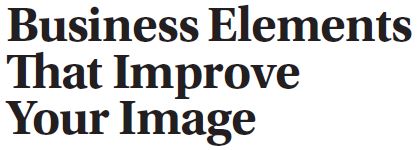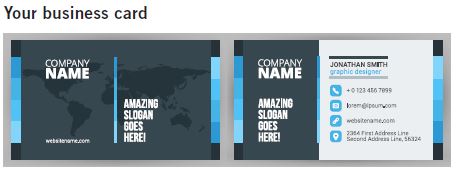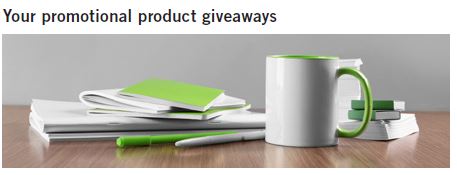Sales: Art Of The Presentation: The Sequel

Second in a two-part series
Looking for ways to increase your sales volume? Work within your existing clients. Sell new or different services or move into other buyers and departments. For example, if you currently provide a company’s Human Resource department with employee awards, make an appointment with the Events department for their conferences or trade shows. Expand your reach within that client.
There are several ways to get started. You can secure an appointment through an existing contact referral, by responding to a request for proposal or through your own due diligence when at the client’s office. Regardless of how you capture the appointment, prepare a presentation that will favorably highlight your existing relationship with the client and successfully educate your new audience about the additional services you provide.

Because there is history between your distributorship and the client, your presentation to the prospective department should focus on the specifics of what you can do for them.
Some of those attending your presentation may be unfamiliar with you, so start with a brief description and a high-level history of your distributorship. Do not spend too much time reviewing information they already know or information that isn’t relevant to this audience.
Include a few pages or slides that showcase past projects with other departments in this company. Develop case studies of your best projects and bring pictures or actual samples when possible.
Do you have a testimonial or letter of recommendation from your current contact at the company? If so, share it with the audience from the new department.
After the overview, your presentation should focus on what you can do for this buyer, division or department. Use case studies, samples and photos of similar projects completed for other companies. Again, use testimonials or a letter of recommendation if there is no potential conflict. The purpose of these materials is to demonstrate clearly and prove your expertise by showing the prospects what you have accomplished for others.
Finish the presentation with a call to action. For example, if you are addressing the group that oversees events, list the company’s events you know are scheduled in the next couple of months. Prepare a few ideas for each and share them. If you are addressing the person in charge of safety programs, you may conclude with some innovative product they can implement into their safety award structure. Show your prospects that you have given a lot of thought to their business; you may get them started in a direction they may have forgotten or overlooked.


Controlled and clear communication before, during and after a presentation is vital.

Before the presentation, confirm in writing:
- Date, time and exact location of meeting
- Number of attendees, names and, if possible, their emails
- Length of time allotted (for example: 1-2 pm)
Send a reminder email three days before the presentation confirming all this information and include an agenda for your contact to share with other attendees. By setting the stage before you are in the room, you will grab the attendees’ attention faster, and you may even trigger questions from them right away. In your reminder email, ask if the client wants to add anything to the agenda. Remember, you want the presentation to fully address their needs.

Briefly refer to the agenda and then get started. Be sure that you or someone on your team takes thorough and accurate notes throughout the presentation. These will be critical in determining your follow-up actions.
Encourage attendees to ask questions during the presentation rather than waiting until the end. You will be better prepared to respond in the moment.
Conclude by asking if there is anything else they would like to learn about you. If you feel comfortable, ask how your services and account philosophy matches their needs.

Always send a thank-you note to each attendee. Use the notes taken during the presentation to bring certain highlights to their attention or to respond to specific concerns or questions. This is also a great time to supplement topics you may have addressed briefly.

Samples, graphics, charts and photographs can bring your ideas to life. But managing visuals during a presentation can be distracting. Bind your papers in order and keep pages numbered and information in chronological order. If you bring samples, decide how best to transport them. Pack apparel neatly, so it shows well when presented.
Think about what items or information you will leave behind. Leave the attendees something that summarizes what you have presented and reminds them about your strengths. Possibilities include the appropriate service materials, a corporate fact sheet and/or a specific summary about the topic of your meeting. Have enough copies for all attendees and make sure your name, company name, phone number and email address are clearly displayed.

A distributor often brings gifts for attendees when pitching a new service. This is always a nice way to make a lasting impression. Also, since you are in the promotional products business, it makes sense to showcase your own creativity and use of product.
However, there are things to consider before you invest time and money in gifts. Many companies have policies regarding accepting gifts over certain dollar amounts. Check the policies for the company you are presenting to. And you don’t want to give the impression that you are trying to “buy” their business. Ask for input before you come into the meeting with gifts in hand.
For fast access to branded goods you feel represent your distributorship, invest in a few quality items in various price points and keep them on hand as self-promo for potential clients. Package them in gift bags with tissue paper in your corporate colors. Or choose edible promos such as cookies, chocolates or cheese and crackers. Food is perfect because the price point is probably low enough to meet corporate policies on gift acceptance, and you don’t need to worry about sizes, color preferences and the like.

You certainly want to look your best in front of a prospective or current client. Of course, you also want to fit in with the client’s culture. It can be awkward if you are in a formal suit and the client wears business casual. Again, do some due diligence prior to the meeting and match your style accordingly.

Relationships and personal connections play a big role in how clients choose a business partner. Sometimes the lead salesperson is sufficient to represent the company. Other times, you will want to bring in appropriate associates or even the entire account team. Your decision will be dictated by the purpose of the meeting. If simply introducing your distributorship to a new department, the lead salesperson with one associate is probably enough. If proposing a specific project, then bring the account team so the client knows who they will be working with on a daily basis.
If you bring multiple people to your presentation, don’t have more attendees than the client does. You don’t want to overpower the room. And make sure that each attendee has a role to play and can do it well. Never have someone attend but not participate.
Part 1 of this article, in the November issue, covered presentation basics for new clients. To find it, search the author’s name at http://pubs.ppai.org.
–––––––––––––––––––––––––––––––––––––––––––––––––––––––––––

Most distributors and salespeople are experts at sales calls—those client meetings where you showcase new products or specific samples in response to a client’s need. But what about written presentations, leave-behind documents or a Request for Proposal submission? These pieces have a long shelf life and you never know when or how they are circulated within an office.
Unfortunately, written materials are often a last-minute thought by the presenter. They may lack the professional touch that could set you apart or make you memorable in a positive way. Here are a few first steps you can take to raise the professionalism of your written presentations.
Start by running spell check on your document—but don’t rely completely on spellcheck. Most will not catch typos like typing “on” instead of “or.” So, have someone who hasn’t worked on the document read it as well. Ask them to read for two things:
- Typos, grammatical errors and other inadvertent mistakes.
- Clarity of your message. Ask if the content makes sense to the reader. Is the flow of information logical and does it offer a clear understanding of the message you want to convey?
Next, review the material with a critical eye and see what you can eliminate or simplify. Very few people will take the time to read your presentation or handout from cover to cover, so add visual cues to your most important information. Use fonts, colors, headlines and select a page layout that directs the reader’s eye. Make it easier for the reader to focus on your most important messages and you will extend your positive in-person presentations to the written page.
Source: Tango Partners
–––––––––––––––––––––––––––––––––––––––––––––––––––––––––––

How do you look to your client? Buttoned up and professional or cluttered and confusing? Our clients and prospects form opinions and make decisions based on how we present ourselves. Each of these categories is a building block toward an overall image. So, what do the following say about you?




We make an impression on our networking contacts and prospects starting when they receive our business card through our first in-person meeting or appointment. Take a critical look at these factors that silently say so much about your business and ask a trusted client or objective person their opinion, too. It’s a truism. Success is in the details.
Source: Tango Partners
–––––––––––––––––––––––––––––––––––––––––––––––––––––––––––
Leigh Canavan, a marketing director who has both given and observed numerous presentations, wrote this article for Tango Partners, a consultancy specializing in the promotional product industry. Clients utilize Tango's experience and support with their Request for Proposal (RFP) process. Formed in 2005 and located in Atlanta, Georgia, Tango works with distributors in new business development, marketing and promotion, www.tangopartners.net or 404-846-1900. Email mlonde@tangopartners.net.

